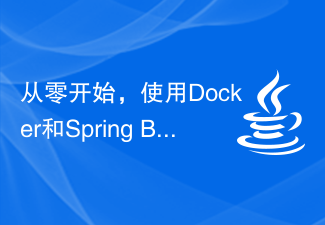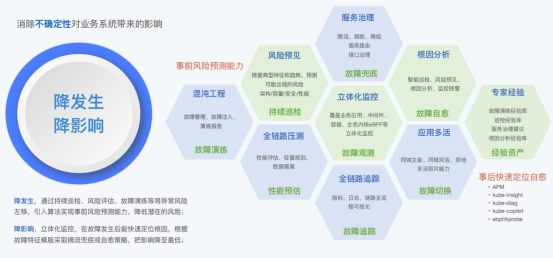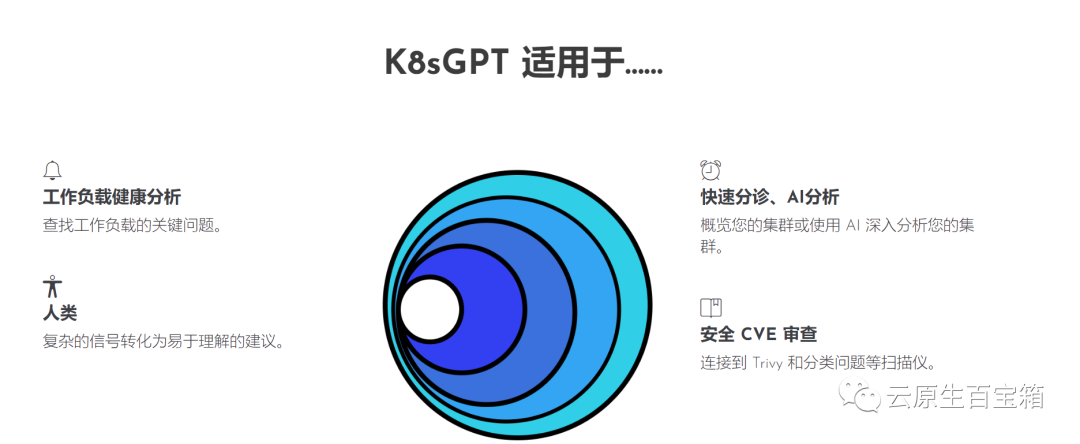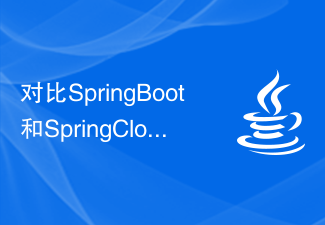
php Editor Banana brings you the book "The Ultimate Guide to Java and Kubernetes: Unlocking the Potential of the Cloud", which comprehensively analyzes the application of Java on the Kubernetes platform. This book details how to leverage the elasticity and scalability advantages of Kubernetes to fully realize the potential of Java in the cloud. Through the guidance of this book, readers will master the best practices for combining Java and Kubernetes, helping developers better build and deploy cloud-native Java applications.
1. Java Microservices and Kubernetes
MicroservicesArchitecture Break down large applications into smaller, loosely coupled services. Kubernetes provides an ideal platform for the deployment and management of microservices because it supports automatic deployment, automatic scaling, and failure recovery.
2. Containerized Java applications
Kubernetes uses containers to package and deploy applications. Docker is a popular container platform that allows developers to package Java applications into container images. These images can be easily deployed to Kubernetes clusters.
3. Java application extensions in Kubernetes
Kubernetes has auto-scaling capabilities that dynamically adjust the number of containers based on the load of the application. This helps ensure that your application remains highly available and performant at all times.
4. Java application persistence in KubernetesKubernetes provides Persistent Volumes (PV) and Persistent Volume Claims (PVC) features that allow developers to associate persistent data storage with containers. This ensures that application data is not lost if the container is rescheduled or deleted.
5. Deploying Java applications in KubernetesThe following is a demo code showing how to deploy a Java application in Kubernetes:
apiVersion: v1 kind: Pod metadata: name: java-app spec: containers: - name: java-container image: GCr.io/my-project/my-java-app:latest ports: - containerPort: 80806. Monitoring and Logging Java Applications
Kubernetes provides a rich set of
monitoringand logginglogging tools that allow developers to monitor and troubleshoot Java applications. Tools such as prometheus and Grafana can be used to collect and visualize application metrics, while tools such as Fluentd and Kibana can be used to collect and search application logs.
7. Best Practices for Java and Kubernetes
- Follow cloud-native practices:
- Follow twelve-factor application and containerization best practices to ensure application efficiency and portability in Kubernetes. Use a CI/CD pipeline:
- Automate the building, testing and deployment process of your application to increase efficiency and reduce errors. Choose the right Kubernetes distribution:
- Choose the right Kubernetes distribution based on your needs, such as GKE, AKS, or EKS. Take advantage of Kubernetes features:
- Take advantage of Kubernetes’ scaling, persistence, and monitoring capabilities to optimize your Java applications.
The combination of Java and Kubernetes provides a powerful solution for
cloud nativedevelopment. By combining microservices architecture with containerization and Kubernetes management, developers can create highly scalable, reliable, and efficient Java applications. The best practices and demo code presented in this article will help you unlock the potential of the cloud and open up new possibilities for your Java applications.
The above is the detailed content of The Ultimate Guide to Java and Kubernetes: Unlocking the Potential of the Cloud. For more information, please follow other related articles on the PHP Chinese website!
 从零开始,使用Docker和Spring Boot构建云原生应用Oct 20, 2023 pm 02:16 PM
从零开始,使用Docker和Spring Boot构建云原生应用Oct 20, 2023 pm 02:16 PM从零开始,使用Docker和SpringBoot构建云原生应用摘要:云原生应用已经成为现代软件开发的趋势,通过使用容器技术和微服务架构,可以实现快速部署和伸缩,提高应用的可靠性和可维护性。本文将介绍如何使用Docker和SpringBoot构建云原生应用,并提供具体的代码示例。一、背景介绍云原生应用(CloudNativeApplication)是指
 云原生稳定性价值被低估?看头部金融企业稳定性保障法则!Jul 04, 2023 am 08:34 AM
云原生稳定性价值被低估?看头部金融企业稳定性保障法则!Jul 04, 2023 am 08:34 AM云计算、大数据、人工智能、区块链等技术浪潮赋予金融科技创新源源不断的生命力,但与此同时,以数字经济为代表的新型经济形态也对传统金融业态和既有底层技术带来深刻变革和巨大挑战。在国际形势复杂化的背景下,国家对安全可靠、自主可控技术提出了更高的要求。金融行业信息系统具备自主研发能力,降低对商业产品的依赖成为当前刻不容缓的工作。由于金融行业涉及民生,业务一旦出现问题,就会对整个社会舆论造成严重影响,因此,金融行业的系统稳定性保障尤为重要。然而,走向数字化的金融企业在业务方面存在不可预测、不可控、复杂性高
 问题排查太烦心,试试GPT的超能力Mar 14, 2024 pm 07:52 PM
问题排查太烦心,试试GPT的超能力Mar 14, 2024 pm 07:52 PM使用Kubernetes时难免会遇到集群中的问题,需要进行调试和修复,以确保Pod和服务能够正常运行。无论你是初学者还是处理复杂环境的专家,调试集群内的进程并不总是易事,可能会变得耗时且繁琐。在Kubernetes中,诊断问题的关键是了解各个组件之间的关系,以及它们如何相互作用。日志记录和监控工具是解决问题的关键,可以帮助你快速定位并解决故障。另外,深入了解Kubernetes资源配置和调度机制也是解决问题的重要一环。当面对问题时,首先要确保你的集群和应用程序的配置是正确的。随后,通过查看日志、
 如何使用C++构建云原生的Web应用程序?Jun 01, 2024 pm 06:22 PM
如何使用C++构建云原生的Web应用程序?Jun 01, 2024 pm 06:22 PM使用C++构建云原生Web应用程序涉及以下步骤:创建一个新项目,添加必要的库。编写业务逻辑并创建HTTP路由。使用Dockerfile创建容器镜像。将镜像构建并推送到注册表。在Kubernetes上部署应用程序。
 对比SpringBoot和SpringCloud的架构层面的异同Jan 24, 2024 am 09:39 AM
对比SpringBoot和SpringCloud的架构层面的异同Jan 24, 2024 am 09:39 AM从架构层面看SpringCloud和SpringBoot的异同比较SpringCloud和SpringBoot是目前Java领域最热门的微服务开发框架,它们都是由SpringFramework衍生而来。虽然它们都是用于构建企业级应用程序,但在架构层面上有一些不同之处。本文将从架构层面上比较SpringCloud和SpringBoot,并通过具体
 IBM开发云原生AI超级计算机Vela 可灵活部署并训练数百亿参数模型Apr 14, 2023 pm 01:46 PM
IBM开发云原生AI超级计算机Vela 可灵活部署并训练数百亿参数模型Apr 14, 2023 pm 01:46 PMChatGPT红遍网络,其背后的AI模型训练也广受关注。IBM研究部门日前宣布,其开发的云原生超级计算机Vela可以快速部署并用于训练基础AI模型。自2022年5月以来,该公司数十名研究人员一直在使用这款超级计算机训练具有数百亿参数的AI模型。 基础模型是基于大量未标记数据训练的AI模型,它们的通用性意味着只需微调就可以用于一系列不同的任务。它们的规模非常庞大,需要大量且成本高昂的计算能力。因此正如专家表示,计算能力将成为开发下一代大规模基础模型的最大瓶颈,训练它们需要花费大量算力和时间。训练可
 Java框架的未来:无服务器和云原生架构May 31, 2024 pm 06:36 PM
Java框架的未来:无服务器和云原生架构May 31, 2024 pm 06:36 PMJava框架的未来归根于无服务器和云原生架构。无服务器架构:可降低运营成本,使开发人员专注于构建应用程序逻辑,推荐框架包括Fn.com、SpringCloudFunctions和ServerlessFrameworkforJava。云原生架构:利用云平台服务,增强可伸缩性、高可用性和可扩展性,推荐框架包括SpringBoot、Micronaut和Quarkus。实战案例中,一家电子商务公司迁移到云原生架构后实现了可伸缩性、高可用性、成本优化和开发速度加快。
 云原生应用程序中的同步和异步通信解码Apr 09, 2024 pm 02:14 PM
云原生应用程序中的同步和异步通信解码Apr 09, 2024 pm 02:14 PM设计云原生应用程序涉及管理由微服务和无服务器组件组成的复杂系统,这些组件需要有效地相互通信。同步通信通过 HTTP 或 gRPC 调用,在指定的时间范围内等待响应,提供实时反馈,适用于需要立即响应的场景。异步通信利用消息代理(如 RabbitMQ 或 Kafka),交换消息而不要求立即响应,增强了系统的可扩展性。通过理解每种通信模式的优点和缺点,架构师可以设计出有效协调这些独立元素的系统,从而提供高性能、可扩展且可靠的云原生应用程序。


Hot AI Tools

Undresser.AI Undress
AI-powered app for creating realistic nude photos

AI Clothes Remover
Online AI tool for removing clothes from photos.

Undress AI Tool
Undress images for free

Clothoff.io
AI clothes remover

AI Hentai Generator
Generate AI Hentai for free.

Hot Article

Hot Tools

PhpStorm Mac version
The latest (2018.2.1) professional PHP integrated development tool

Safe Exam Browser
Safe Exam Browser is a secure browser environment for taking online exams securely. This software turns any computer into a secure workstation. It controls access to any utility and prevents students from using unauthorized resources.

SublimeText3 English version
Recommended: Win version, supports code prompts!

Dreamweaver CS6
Visual web development tools

SublimeText3 Mac version
God-level code editing software (SublimeText3)






